 |
|||
This translation is unedited!
Tanino Liberatore
The Italian artist Gaetano (Tanino) Liberatore was born on 12. April 1953 in Quadri/Italy. At the age of 13, his father - who did not think much of his drawing as a career goal (theme: "Breadless Art") - finally went to the art school in Pescara, where he met his later artist colleague Andrea Pazienza (1956-1988). His further academic education led him to Rome to study architecture at its university. Between 1974 and 1978 he already designed some record covers for RCA Italy.
In 1978 Liberatore met Stefano Tamburini. The first Ranxerox story Rank Xerox, il coatto! was written and drawn in black and white by Tamburini himself and published in his own underground comic magazine Cannibale.
The anti-hero RanXerox is a human-like robot with machined parts from Xerox copiers. The figure was created by Stefano Tamburini and Tanino Liberatore and Andrea Pazienza contributed the drawings. Pazienza drew some pages of the first stories before Liberatore became the main artist around 1980. The name of the hero was "Rank Xerox", a merger of the British Rank Organization and the American Xerox Corporation. Tamburini later changed the name to "RanXerox" to avoid litigation with Xerox.
In 1979 you could find pages of RanX in the magazine Il Male. Only with the end of Cannibal and the new publication of the comic strip magazine Frigidaire - which Liberatore co-founded - does "RanXerox" (from 1980) find a new home - until his creator Stefano Tamburini unexpectedly dies on 23 April 1986 (1). The first English translation was published in 1983 in the US magazine Heavy Metal.
The third part of the trilogy was only published in Italy in 1996 by Edition 3ntini, with texts by Alain Chabat, which brought the story to an end. In order to avoid legal problems, the original title for the German version has also been slightly changed. RanXerox" became Ranxeron in the 1983 version published by Taschen.
RanXerox offers a wacky plot and archaic violence, similar to the characters of Richard Corben (such as "Den"), and exploding material in the form of minimal permissive sexual interludes censored in the English publication in Heavy Metal magazine (see examples below). Basically this only concerned the first band/part of "RanXerox in New York" and there only a few "harmless" pictures showing the erect penis of RanX. The fact that the girlfriend or owner of RanXerox is a young, drug-using girl further fuelled the controversial discussions about this comic strip - which, of course, made him more popular. The comic was translated into several languages and published in countries such as France (almost simultaneously as in Italy), Germany, Holland, Spain, America, Brazil, Japan,...
The series was awarded the Alfred Presse Prize in 1983 in Angoulême. "Ranxerox is a punk, futuristic Frankenstein, and with the under-aged Lubna, they are a bizarre "Beauty and the Beast". This artist and writer team have turned a dark mirror to the depths of our Id and we see reflected the base part of ourselves that would take what it wants with no compromise, no apology-and woe to the preson who would cross us. But it is all done with a black, wry, satyrical sense of humor." (2) "Rome 1990: the decadence, violence and addiction of the West to power and wealth in its late stages. The 30th Street: A grotesque, baroque scenery of drug addicts whose dealers... and the blood-young Lubna, who has fallen for Ranxeron. Ranxeron:"Robot, a man-made machine with synthetic emotions, is reprogrammed by the billion-dollar media tycoon Volare against his automated will to become a Broadway superstar" (3) A similar cult comic with comparable stylistic elements and content was created in 1990 with Frank Millers and Geof Darrows Hard Boiled. For his extremely realistic drawing style, Tanino Liberatore uses Pantone Markers and even make-up and lipstick paint, which is rubbed to create an unmistakable, distinctive look. Liberatore's works - including a number of short stories with various authors such as Setbono, Daniel Varenne and Bruce Jones - were featured in several international comic magazines of his time, such as Métal Hurlant (or Heavy Metal and Heavy Metal (see list below), Asuivre, L?Ècho des Savanes, Chic and Hustler. Some of these short stories can be seen in the "Video Clips" collection published in 1984. He also remained faithful to the record cover design and drew the front cover for the Frank Zappa album "The Man from Utopia". Zappa is to be seen as RanXerox Look-a-like with electric guitar. Liberatore also worked for the film as well as for television. For "24 Hours in the Life of a Woman" (2002) he worked as a production designer and for the film "Asterix and Obelix: Mission Kleopatra" (2002) as a costume designer. For "RRRRrrrrrrr!!!!" and a series of "Batman: Black and White" (In Dreams, 2009), Liberatore worked as an art and pre-production designer. In recent years Liberatore has increasingly published illustrated volumes with detailed and imaginative colour and black and white images of women's motifs. According to an interview, he was never the big fan of comics or the character that made him so famous. He's got too much repetition in the comic book. Liberatore sees himself much more as an illustrator in his artistic work. The "reputation" of the RanXerox comic lives from its obvious violent peaks and alleged sexual interludes. RanXerox is certainly not an erotic comic strip. But Liberatore shows his affection for eroticism less in his comic works than in his erotic illustrations, as he wanted to "always draw naked women"as described on his homepage. His "serious" works should not hide the fact that he is only too happy to deviate from this path in search of naked women, whom he can then draw. Liberatore has been living in France since the early 1980s - together with his wife Mary and his daughter Marianna. |
|||||||||
Tanino Liberatore Der italienische Künstler Gaetano (Tanino) Liberatore wurde am 12. April 1953 in Quadri/Italien geboren. Mit 13 Jahren ließ in sein Vater - der nicht viel von seiner Zeichnerei als Berufsziel hielt (Thema: "Brotlose Kunst") - endlich auf die Kunstschule in Pescara gehen, wo er auf seinen späteren Künstlerkollegen Andrea Pazienza (1956-1988) traf. Seine weitere akademische Ausbildung führte in nach Rom, um an dessen Universität Architektur zu studieren. 1978 traf Liberatore auf Stefano Tamburini. Die erste Ranxerox Geschichte Rank Xerox , il coatto! wurde in schwarz-weiß noch von Tamburini selbst geschrieben und gezeichnet und in seinem eigenen Underground-Comicmagazin Cannibale veröffentlicht. Der Antiheld RanXerox ist ein menschenähnlicher Roboter mit verarbeiteten Teilen aus Xerox Kopiermaschinen. Die Figur wurde von Stefano Tamburini erschaffen und Tanino Liberatore und Andrea Pazienza steuerten die Zeichnungen dazu. Pazienza zeichnete einige Seiten der ersten Geschichten, bevor Liberatore um 1980 Hauptzeichner wurde. Der Name des Helden war zu Beginn noch "Rank Xerox", ein Zusammenschluss aus der englischen Rank Organisation und der amerikanischen Xerox Corporation. Tamburini änderte später den Namen in "RanXerox" um einen Rechtsstreit mit Xerox zu vermeiden. 1979 konnte man Seiten von RanX im Magazin Il Male finden. Erst mit dem Ende von Cannibal und der Neuerscheinung des Comic-Magazins Frigidaire - welches Liberatore mitbegründete - findet "RanXerox" (ab 1980) eine neue Heimat - bis am 23. April 1986 (1) unerwartet sein Schöpfer Stefano Tamburini stirbt. Eine erste englische Übersetzung wurde 1983 im US-Magazin Heavy Metal abgedruckt. Erst 1996 wurde der dritte Teil der Trilogie in Italien bei Edition 3ntini veröffentlicht; mit Texten von Alain Chabat, der die Geschichte zu einem Ende führte. Zur Vermeidung rechtlicher Probleme wurde der Originaltitel für die deutschen Fassung zusätzlich leicht abgeändert. Aus "RanXerox" wurde in der 1983 bei Taschen erschienenen Fassung Ranxeron. RanXerox bietet neben einem abgedrehten Plot und archaischer Gewalt, ähnlich den Figuren von Richard Corben (wie zum Beispiel "Den"), Zündstoff in Form von minimalen freizügigen Sexeinlagen, die in der englischen Veröffentlichung im Magazin Heavy Metal zensiert wurden (siehe Beispiele unten). Das betraf im Grunde nur den ersten Band/Teil "RanXerox in New York" und dort auch nur ein paar "harmlose" Bilder die den erigierten Penis von RanX zeigen. Das die Freundin bzw. Besitzerin von RanXerox ein recht jung wirkendes, Drogen konsumierendes Mädchen ist, heizte die Diskussionen um diesen kontroversen Comic weiter an - was in Folge dessen natürlich seinen Bekanntheitsgrad steigerte. "Ranxerox is a punk, futuristic Frankenstein, and with the under-aged Lubna, they are a bizarre "Beauty and the Beast". This artist and writer team have turned a dark mirror to the depths of our Id and we see reflected the base part of ourselves that would take what it wants with no compromise, no apology-and woe to the preson who would cross us. But it is all done with a black, wry, satyrical sense of humor." (2) "Rom 1990: der Verfall des Abendlandes in Dekadenz, Gewalt und animalische Sucht nach Macht und Reichtum im Spätstadium. Die 30te Strasse: Eine groteske, Barock anmutende Szenerie der Drogensüchtigen, deren Dealern... und der blutjungen Lubna, der Ranxeron hörig verfallen ist. Ranxeron: Roboter, von Menschenhand erschaffene Maschine mit synthetischen Gefühlen, wird von dem milliardenschweren Medientycoon Volare gegen seinen automatisierten Willen zum Broadway-Superstar umprogrammiert" (3) Ein ähnlicher Kult-Comic mit vergleichbaren Stilelementen und Inhalten entstand erst wieder 1990 mit Frank Millers und Geof Darrows Hard Boiled. Für seinen äußerst realistischen Zeichenstil verwendet Tanino Liberatore neben Pantone Markern sogar Schmink- und Lippenstift-Farbe, die verrieben wird um so einen unverwechselbaren eigenständigen Look zu kreieren. Liberatores Arbeiten - darunter auch etliche Kurzgeschichten mit verschiedenen Autoren, wie zum Beispiel Setbono, Daniel Varenne oder Bruce Jones - fanden sich in etlichen internationalen Comicmagazinen seiner Zeit, wie zum Beispiel Métal Hurlant (bzw. Heavy Metal und Schwermetall (siehe Aufstellung unten)), Asuivre, L´Ècho des Savanes, Chic oder Hustler. Einige dieser Kurzgeschichten sind in der 1984 veröffentlichten Sammlung "Video-Clips" zu sehen. Zudem blieb er dem Plattencover-Design treu und zeichnete unter anderem das Frontcover für das Frank Zappa Album "The Man from Utopia". Darauf ist Zappa als RanXerox Look-a-like mit E-Gitarre zu sehen. Neben einigen Arbeiten für das Fernsehen arbeitete Liberatore auch für den Film. Für "24 Hours in the Life of a Woman" (2002) war er als Productions Designer aktiv und für den Streifen "Asterix und Obelix: Mission Kleopatra" (2002) als Kostüm-Designer. Für "RRRrrrr!!!" und einer Folge von "Batman: Black and White" (In Dreams, 2009) war Liberatore als Art- und Pre-Production-Designer tätig. In den letzten Jahren veröffentlichte Liberatore vermehrt Illustrationsbände mit detailreichen und fantasievollen Farb- und Schwarz-Weiß-Bildern von Frauenmotiven. Laut einem Interview war er nie der große Fan von Comics oder der Figur die ihn so berühmt gemacht hat. In den Comic ist ihm zu viel Wiederholung. Liberatore sieht sich in seiner künstlerischen Arbeit viel mehr als Illustrator. Der "Ruf" der RanXerox-Comic lebt von seinen offensichtlichen Gewaltspitzen und vermeintlichen Sex-Einlagen. Ein erotischer Comic ist RanXerox sicherlich nicht. Doch Liberatore zeigt seine Zuneigung zur Erotik weniger in seinen Comicarbeiten, als vielmehr mit seinen erotischen Illustrationen, da er - wie auf seiner Homepage beschrieben - "immer schon nackte Frauen zeichnen wollte". Seine "seriösen" Arbeiten sollten nicht darüber hinwegtäuschen, das er nur zu gerne von diesem Pfad abweicht, um sich auf die Suche nach nackten Frauen zu begeben, die er dann zeichnen kann. Liberatore lebt seit Anfang der 1980er Jahre in Frankreich - zusammen mit seiner Frau Mary und seiner Tochter Marianna. Veröffentlichungen Frankreich/Publications French (Auswahl/Selection): Art Books/Illustrationen (Auswahl/Selection): RanXerox Veröffentlichungen Deutschland/Publications Germany Medien: Links: Quellen/Sources: |
|||||||||
 |
|||||||||
 |
|||||||||
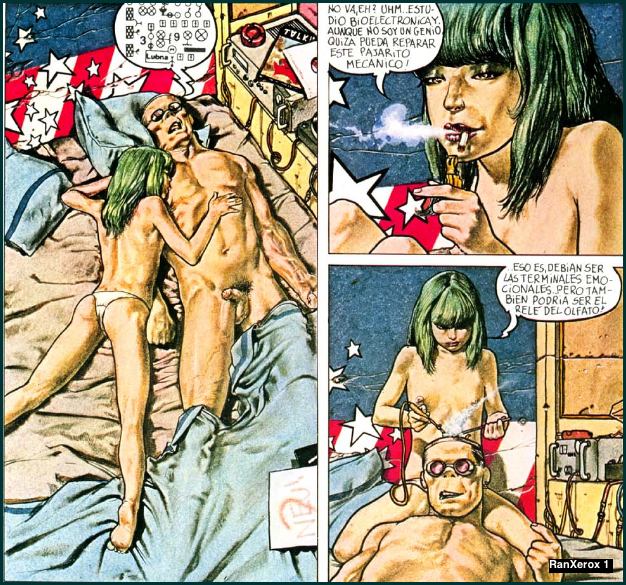 |
|||||||||
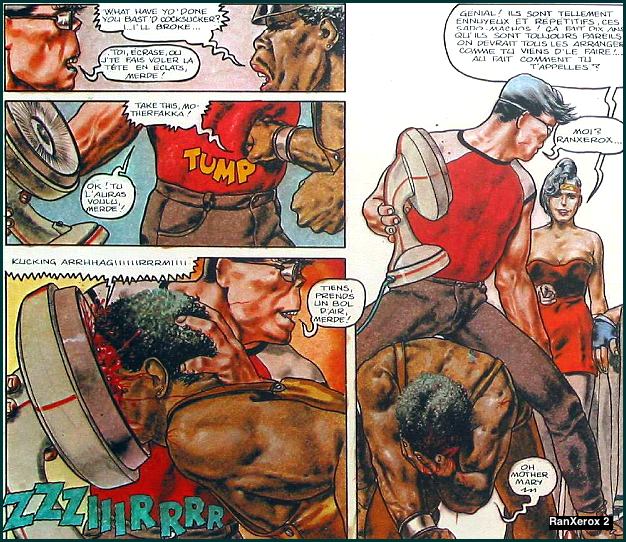 |
||
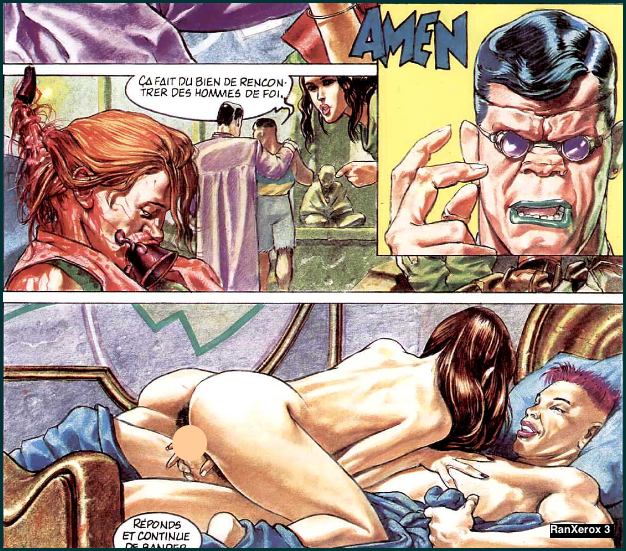 |
||
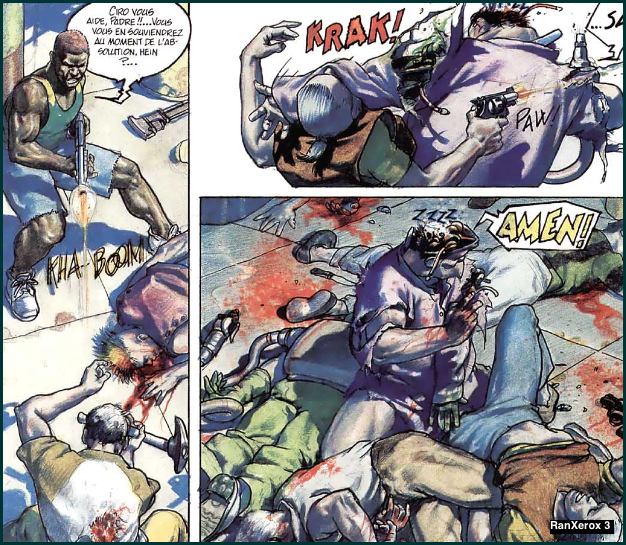 |
||
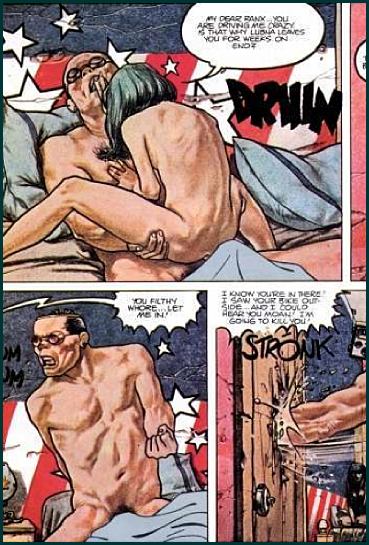 |
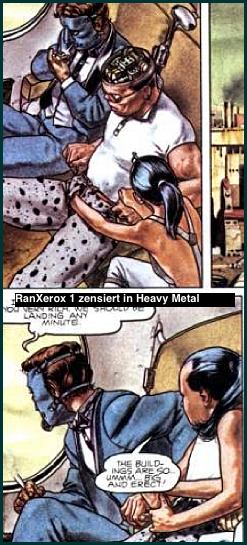 |
|||
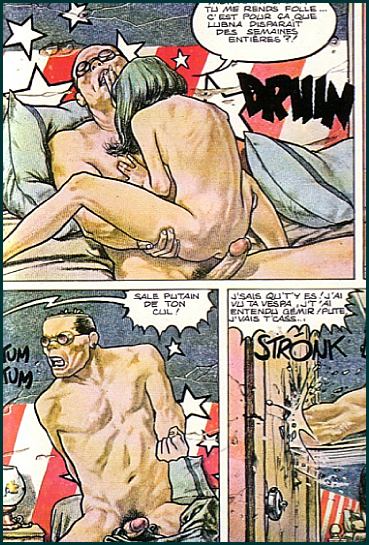 |
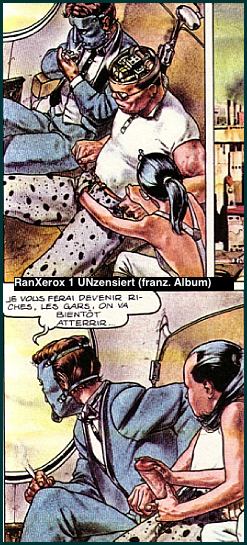 |
|||
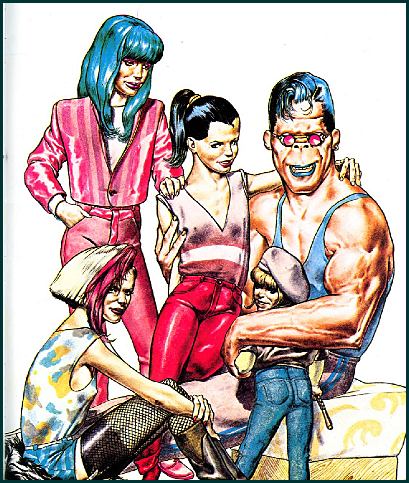 |
||||
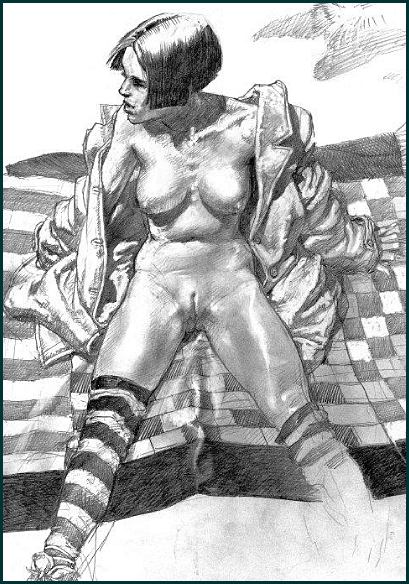 |
||||
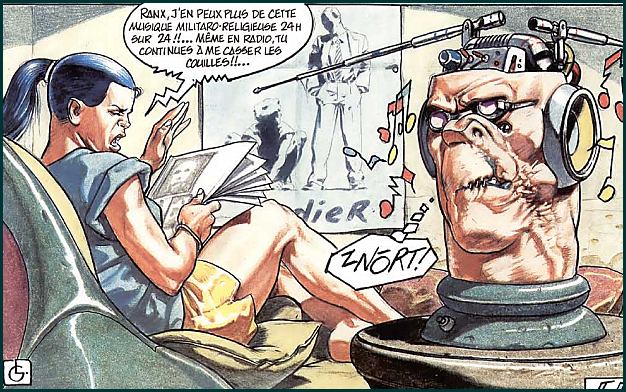 |
||
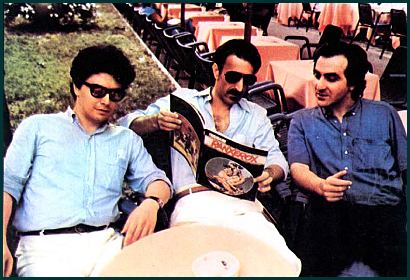 |
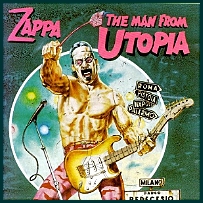 |
|||||